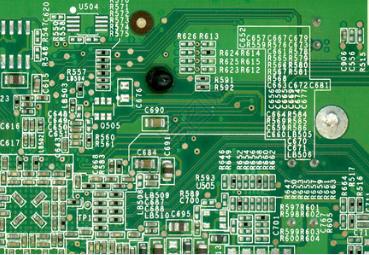The circuit board is the support for the circuit components and devices in electronic products. Even if the circuit schematic is designed correctly and the printed circuit board is not properly designed, it will adversely affect the reliability of electronic products. When designing a printed circuit board, you should pay attention to adopting the correct method, abide by the general principles of PCB design, and meet the requirements of anti-interference design.
1. General principles of PCB design
To get the performance of the electronic circuit, the layout of the components and the layout of the wires are very important. In order to design PCBs with good quality and low cost, the following general principles should be followed:
layout
First, consider the PCB size. When the PCB size is too large, the printed lines will be long, the impedance will increase, the anti-noise ability will decrease, and the cost will increase; if the PCB size is too small, the heat dissipation will not be good, and adjacent lines will be easily disturbed. After determining the PCB size, determine the location of the special components. At the end, all components of the circuit are laid out according to the functional units of the circuit.

The following principles should be observed when determining the location of special components:
1* Shorten the wiring between high-frequency components as much as possible, try to reduce their distribution parameters and mutual electromagnetic interference. Components that are susceptible to interference should not be too close to each other, and input and output components should be kept as far away as possible.
2*There may be a high potential difference between some components or wires. The distance between them should be increased to avoid accidental short circuits caused by discharge. The components with high voltage should be arranged as far as possible in places that are not easily reachable by hands during debugging.
3* Components weighing more than 15g should be fixed with brackets and then welded. Those components that are large, heavy, and generate a lot of heat should not be mounted on the printed circuit board, but should be mounted on the chassis bottom plate of the whole machine, and the heat dissipation problem should be considered. Thermal components should be far away from heating components.
4*For the layout of adjustable components such as potentiometers, adjustable inductance coils, variable capacitors, micro switches, etc., the structural requirements of the whole machine should be considered. If it is adjusted inside the machine, it should be placed on the printed circuit board where it is convenient for adjustment; if it is adjusted outside the machine, its position should match the position of the adjustment knob on the chassis panel.
5*The position occupied by the positioning hole of the printed board and the fixed bracket should be reserved.
When PCB layout of circuit components, it must meet the requirements of anti-interference design:
1* Arrange the position of each functional circuit unit according to the circuit flow, so that the layout is convenient for signal circulation, and the signal is kept in the same direction as possible.
2* Take the important components of each functional circuit as the center and lay out around it. The components should be arranged evenly, neatly and compactly on the PCB. Minimize and shorten the leads and connections between components.
3 * For circuits operating at high frequencies, the distribution parameters between components must be considered. Generally, the circuit should be arranged in parallel as much as possible. In this way, it is not only beautiful, but also easy to install and weld, and easy to mass produce.
4*The components located on the edge of the circuit board are generally not less than 2mm away from the edge of the circuit board. The shape of the circuit board is rectangular. The length and width pairs are 3:2 or 4:3. When the circuit board size is larger than 200*150mm, the mechanical strength of the circuit board should be considered.